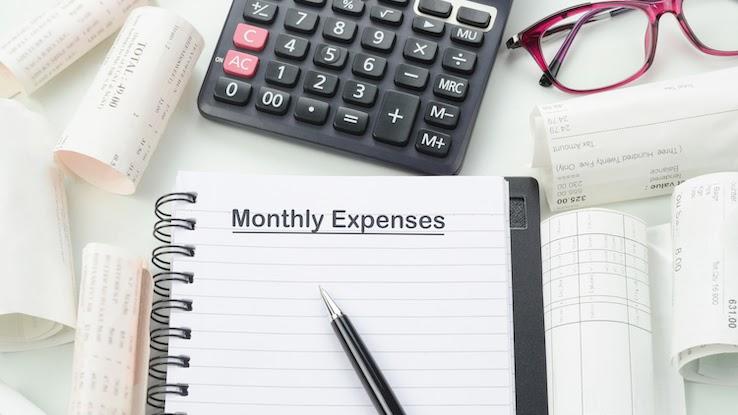
When you think of personal financial planning and money management, the first thing that might come to mind is that you’ll need to establish a clear budget. It’s what serves as a foundation to help you plan for the future by keeping your spending in check and your savings on track. Setting a budget means setting financial goals, too, and it’s one of the first steps you’ll take towards making decisions about what you want to do with your money.
Having a budget is vital, which you probably already know. But another essential (and often overlooked) budgeting tool you’ll want to start using is an income and expense worksheet. While a budget can help you plan for the future, this worksheet can show you what you’re really doing with your money right now — not later on.
It’s important to have both your budget and an income and expense tracker for keeping a record of your money moves. When you do, you can improve your money management and make more informed financial decisions for your future. With this in mind, let’s dive into what an income and expense worksheet is and how it can help you reach your financial goals.
Income-Expense Basics: Keeping Track of Your Actual Spending

A budget breaks down how much money you intend (or can afford) to spend each month on housing, utilities, groceries and other expenses. The issue that can arise with budgeting, though, is that things don’t always go according to even the best-laid plans.
Everything might be smooth sailing, with your expenses exactly matching what you anticipated in the budget, or you might experience an emergency expense that pushes your budget off track. Or maybe you enjoyed some retail therapy, and just spent more than you anticipated on ordering food or shopping for hobby supplies. If you don’t follow your budget, you can end up between a rock and a financial hard spot. But sometimes you can’t follow your budget — simply due to life circumstances.
That’s where an income and expense worksheet comes in. Every time you earn or spend money, you log the amount in your worksheet, no matter what it is — from a big utility bill to a small snack purchase from the gas station. Doing this puts you face to face with what comes in and what goes out in a given month, and it can help you make tweaks to your budget so it works better for your needs. Much like you would with a budget, you can group your income and expenses into certain categories (job, home, car, entertainment) with this type of tracker. You can also take note of how much income you made, including your primary source of income and potentially any income from side sources.
The most important function of an income and expense worksheet is enabling you to see how you spent funds in a given period of time. Whereas budgeting can feel a bit aspirational, this tool paints a clear picture of your spending habits, and can ultimately tell you where you need to cut back and where you’re already meeting your budgeting goals.
Help in Reaching Your Financial Goals

An income and expense worksheet can help you learn to better manage your money, which is certainly important if you want to reach your financial goals. By analyzing how much money you’re spending and where you’re spending it, you’ll start to notice areas where you’re doling out more than you really want to. And when those areas are things you can cut back on, like a daily coffee or multiple restaurant visits a week, you can use this information to modify your habits and keep more money in your bank account. This is key if you’re working towards saving for short-term goals like a vacation or long-term goals like establishing an emergency fund.
Tracking your spending and your income in a spreadsheet or app can reveal all the details about your day-to-day financial habits. Doing this requires honesty, discipline and perseverance, even if you have a month with your spending that you’re not proud of. Using a tracker allows you to fully see where you have room for improvement in your budget — and where you’re doing really well.
After doing a deep dive into your monthly expenditures (especially those you’ve set up on autopay and might’ve forgotten about), you may find that you’re paying for a service that you don’t even use, like a streaming platform or a gym membership. If so, you can cancel the service and keep more money in the bank. You may also find that you’re spending more than you want on a service or on a particular habit. It’s possible that you could downgrade to a less-expensive cable package or start cooking at home more often to save more money for your goals.
If money is a stressor for you and your family, developing an income and expense worksheet could help to lower that anxiety. You can learn to cut down impulse spending, get out of debt and take control of your money and life, all by simply tracking how much you’re earning and spending. It’s not about anticipating costs or setting parameters regarding your financial goals — that’s what a budget is for. These trackers are about getting the clearest picture possible of where you spend every penny so you can make the most informed decisions possible.
Developing an Effective Income and Expense Worksheet

When it comes to developing an expense tracker of your own, you might prefer the trusty paper-and-pen method to reinforce what you’re recording. If you like to work digitally, creating a spreadsheet through Microsoft Excel or Google Sheets could be best. Some people opt to use mobile apps to track their spending by easily connecting their bank and credit card accounts. Whatever method you use, make sure it’s something you actually like; this increases your chances of sticking with it long term. There are also a few things to understand to ensure an income and expense worksheet works for you.
You’ll want to make a sheet with different headers to help you track both your income and your expenditures. This keeps everything organized at the most fundamental level. Your sheet should include the source of any income, and you should detail which account every purchase came from and where you spent the money. The tracker should also include the date and amount of the expense or income, along with a description and a category that the purchase falls under.
The way you organize your tracker is ultimately up to you. You might prefer to group things by category, or you might process the information better by looking at it chronologically. Writing down where you spent each penny will mean keeping up with receipts of your expenses as well as automatic deposits and charges from your bank account or credit card.
Analyzing Your Income and Expense Worksheet Each Month for Long-Term Changes

After taking a real inventory of your expenses, you can see how your spending is (or isn’t) falling in line with your monthly budget. From here, you can tell where you’ll need to make changes to turn your financial goals into reality. Of course, you’ll have some fixed expenses like housing payments, insurance premiums and loan payments, which are less likely to change and won’t need managing as frequently. Other variable expenses, like your food, clothing and travel costs, are where you’ll likely end up making the most adjustments — and that’s okay.
It doesn’t matter if you decide to handwrite your expenses out or track them with a mobile app. What matters is that you get into the habit of tracking your income and expenses each day, which will only take a few minutes. If you’re consistent with tracking and are committed to better money management, you can set yourself up for a better financial future — and an income and expense worksheet is a tool that’ll help get you there.





